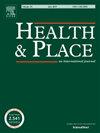A systematic review of measurement tools and senior engagement in urban nature: Health benefits and behavioral patterns analysis
IF 3.8
2区 医学
Q1 PUBLIC, ENVIRONMENTAL & OCCUPATIONAL HEALTH
引用次数: 0
Abstract
The engagement of senior citizens with urban nature has been shown to provide multiple health benefits and mitigate health issues associated with demographic aging. This review utilized the PRISMA methodology to systematically analyze the relationship between monitoring tools, seniors' behaviors in urban nature, and influencing factors. The main findings are as follows: (1) 4 main types, including self-reports, on-site observations, sensors, and third-party data, and 24 sub-types of measurement tools: ranging from questionnaires to crowdsourced imagery services. Self-reports capture participants' awareness of behaviors, on-site observations record various types of behaviors, sensors collect indicators to detect the body's direct responses, and third-party data provide representative behavior data from large samples. (2) 4 categories and 45 types of behaviors: physical and sports behaviors, leisure and recreational behaviors, relaxation, and passive behaviors, social and care behaviors, based on their characteristics and purposes. Physical and sports behaviors are the most common types for the elderly in urban nature, with walking being the most frequently measured behavior. (3) 36 influencing factors: ranging from diabetes risk to balanced meal habits, classified into 4 categories from physical and vitality health to social and lifestyle health. Physical and vitality health are the most affected category, receiving more academic attention. Gardening is identified as having the most health benefits. This review provides a classification of tools and behaviors, and a detailed discussion of future trends in the field. It provides actionable insights for researchers, urban designers, city managers, and policymakers to select the appropriate measurement tool from 24 sub-tools to better understand behaviors of elderly people in urban nature. It can also help them select the right type of behavior from 45 sub-behaviors to investigate in line with their research goals to improve seniors' health and well-being.
测量工具和高层参与城市自然的系统回顾:健康效益和行为模式分析。
老年人与城市自然的接触已被证明可以提供多种健康益处,并减轻与人口老龄化相关的健康问题。本文利用PRISMA方法系统分析了监测工具与老年人在城市自然中的行为及其影响因素之间的关系。研究发现:(1)自述、现场观测、传感器、第三方数据等4种主要测量类型,问卷调查、众包图像服务等24种测量工具。自我报告捕捉参与者对行为的意识,现场观察记录各种类型的行为,传感器收集指标来检测身体的直接反应,第三方数据提供大样本的代表性行为数据。(2)根据行为的特点和目的,将行为分为体育运动行为、休闲娱乐行为、放松和被动行为、社会和关怀行为等4类45种。身体和运动行为是城市自然中老年人最常见的行为类型,步行是最常被测量的行为。(3) 36个影响因素:从糖尿病风险到均衡膳食习惯,从身体和活力健康到社会和生活方式健康分为4类。身体和活力健康是受影响最大的类别,受到更多的学术关注。园艺被认为是最有益于健康的。这篇综述提供了工具和行为的分类,并详细讨论了该领域的未来趋势。它为研究人员、城市设计师、城市管理者和政策制定者从24个子工具中选择合适的测量工具提供了可操作的见解,以更好地了解城市自然中的老年人行为。它还可以帮助他们从45个子行为中选择正确的行为类型进行调查,以符合他们的研究目标,以改善老年人的健康和福祉。
本文章由计算机程序翻译,如有差异,请以英文原文为准。
求助全文
约1分钟内获得全文
求助全文
来源期刊

Health & Place
PUBLIC, ENVIRONMENTAL & OCCUPATIONAL HEALTH-
CiteScore
7.70
自引率
6.20%
发文量
176
审稿时长
29 days
期刊介绍:
he journal is an interdisciplinary journal dedicated to the study of all aspects of health and health care in which place or location matters.
 求助内容:
求助内容: 应助结果提醒方式:
应助结果提醒方式:


